Salt has always been associated with the sea or on some occasions, salt mountains and even mines, but in Northern Spain, in the Basque country near the town of Álava, there is a rather unusual saltern where nature does practically all the work and has been for millenniums. This privileged location is called the Salt Valley of Añana.
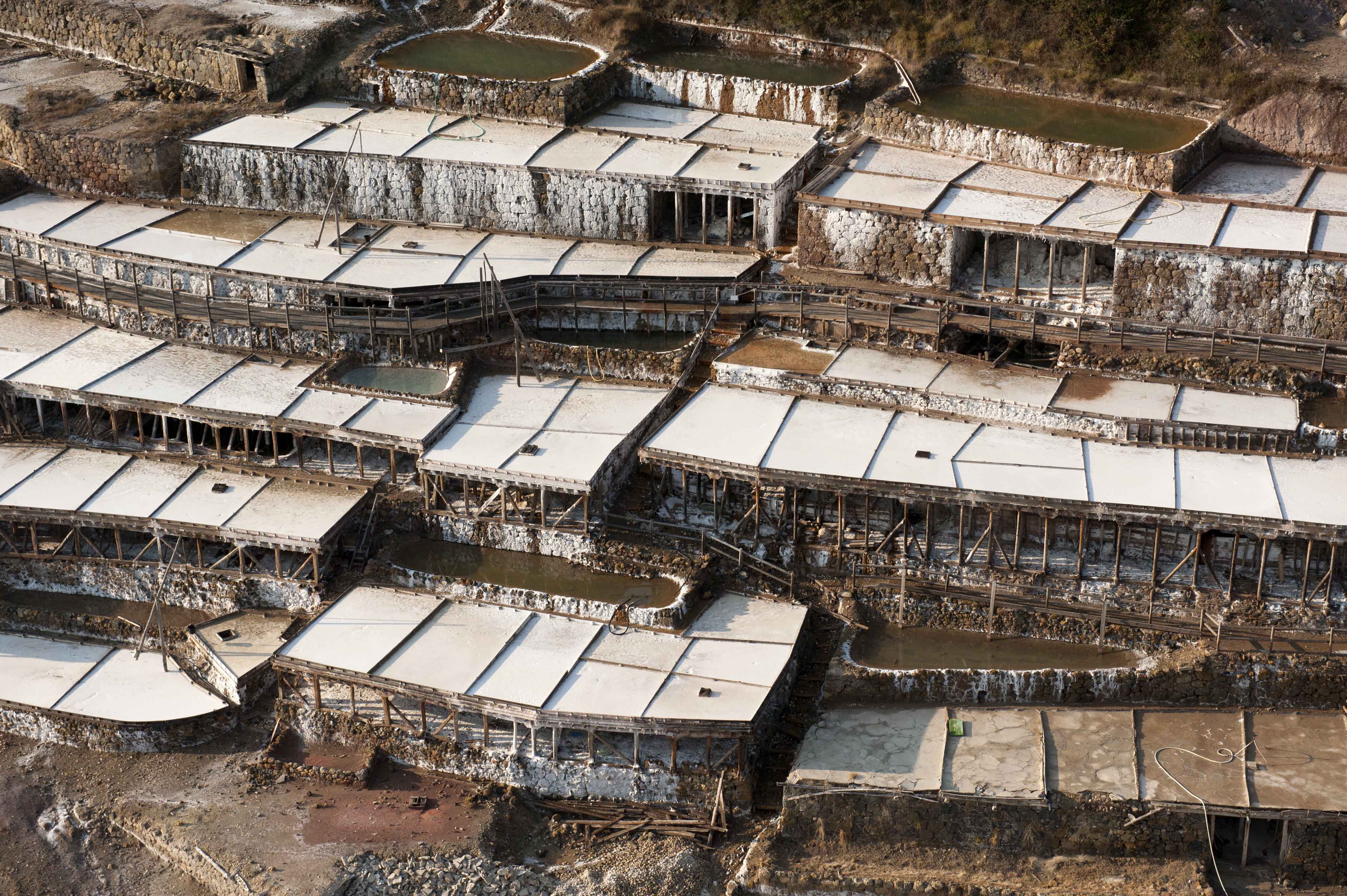
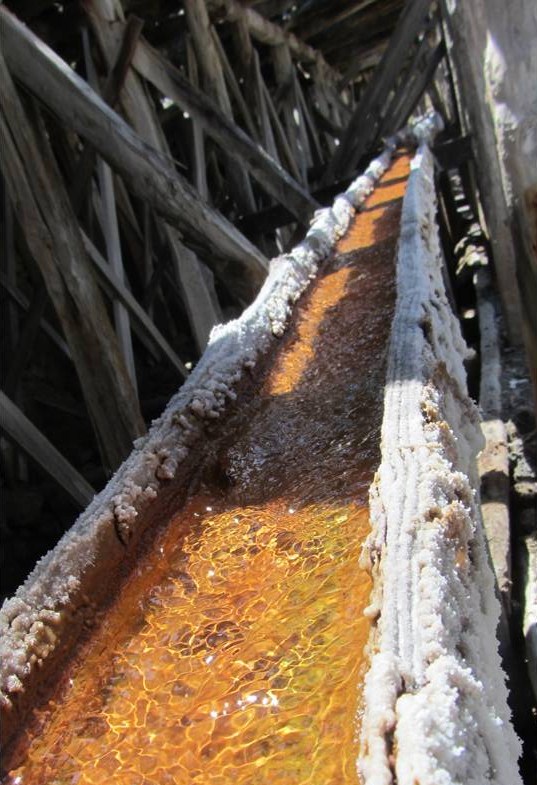 The first thing you might ask yourself when you see this marvel is how and why is salt produced here and not someplace else? Especially when there is no mine visible. The answer is a geological phenomenon known as a Diapir. Roughly speaking, the area that makes up the valley was covered by a big ocean more than 200 million years ago that eventually dried up, leaving a layer of salt several kilometres thick. With time, this layer was covered by new stratum that hid it from sight forever. Because of the different densities between layers (similar to what happens when we mix water with oil), in some very specific points of the valley, the salt emerged to the surface. And those are the places where we can find the underground salt deposits. But how do you extract it? The answer is simple: either by mining which is hard work and expensive or taking advantage of the saltwater (brine) springs that are created after freshwater has filtered through the layers of solid salt diluting it and bring it to the surface, and enabling a 200 million-year-old mineral to reach your kitchen table. The salt works of Añana belong to the large group of neighbours in fact almost the entire population of the village owns shares in the salt plant as they are fortunate enough to have several springs that provide around 260.000 litres of brine daily with a concentration near to saturation point.
The first thing you might ask yourself when you see this marvel is how and why is salt produced here and not someplace else? Especially when there is no mine visible. The answer is a geological phenomenon known as a Diapir. Roughly speaking, the area that makes up the valley was covered by a big ocean more than 200 million years ago that eventually dried up, leaving a layer of salt several kilometres thick. With time, this layer was covered by new stratum that hid it from sight forever. Because of the different densities between layers (similar to what happens when we mix water with oil), in some very specific points of the valley, the salt emerged to the surface. And those are the places where we can find the underground salt deposits. But how do you extract it? The answer is simple: either by mining which is hard work and expensive or taking advantage of the saltwater (brine) springs that are created after freshwater has filtered through the layers of solid salt diluting it and bring it to the surface, and enabling a 200 million-year-old mineral to reach your kitchen table. The salt works of Añana belong to the large group of neighbours in fact almost the entire population of the village owns shares in the salt plant as they are fortunate enough to have several springs that provide around 260.000 litres of brine daily with a concentration near to saturation point.
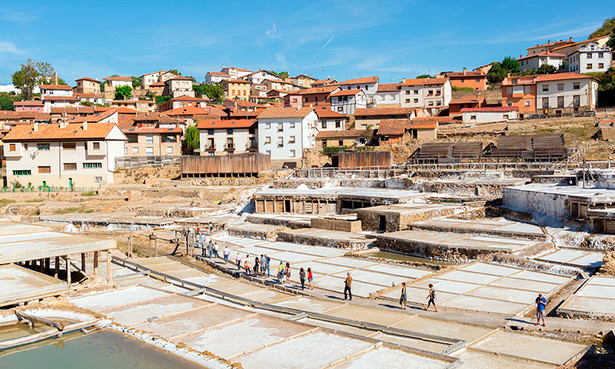
Looking at it today, it's almost inconceivable that something so abundant and low cost would have had such historical importance. However, it has to be taken into consideration that salt was, and is, essential in a lot of industrial processes and also in human and animal diet. It was even more important before the development of industrial cooling since it was one of the most effective methods of preserving food. As a matter of fact, salt was the cause of war and forced peace, the cause of death and crownings, of richness and poorness, the creation and destruction of towns and cities, and of course, greed. This is very evident in the history of Añana... The first traces of settlements near the salt springs date back 5,000 years. Since then their inhabitants adapted the area to their interests and left their mark. In the Iron Age, they left the bottom of the slopes and built their houses on easily defendable elevated sites and in Roman times, the settlement system suffered a big change. Probably due to the importance of the salt of Añana, just a few kilometres from the springs, near the modern-day town of Espejo, emerged a city called Salionca. Its economic development attracted the surrounding population to live in this thriving city. Around the fifth century, Salionca was destroyed after suffering a major fire and the city was abandoned and some of its inhabitants went to live and work in the salt valley.
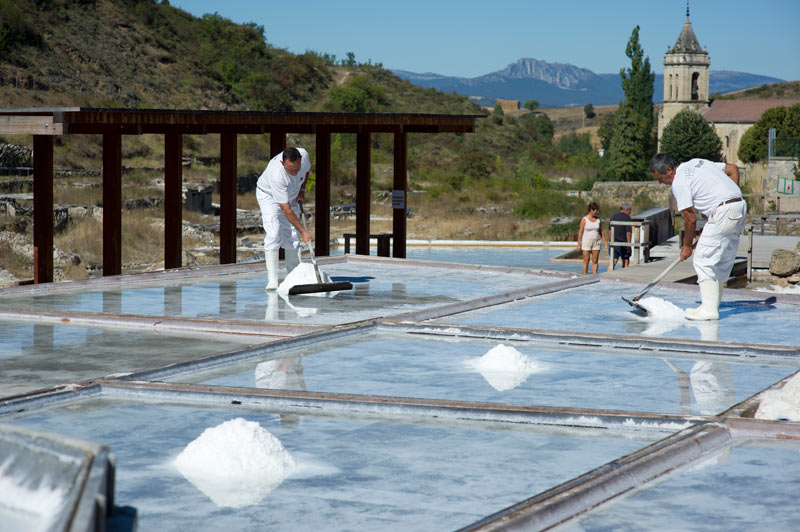
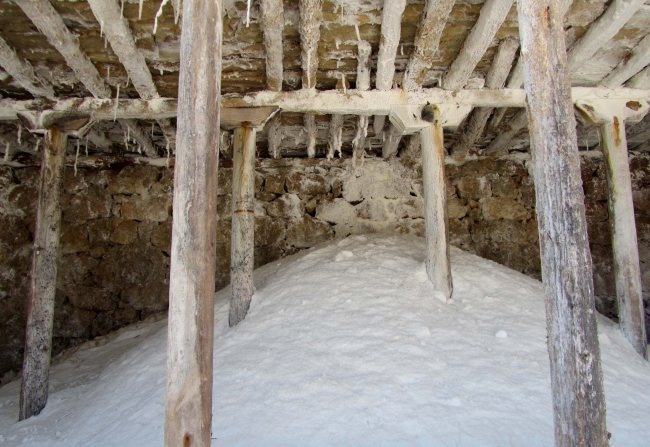
The springs bring the brine to the surface level in a natural and continuous way, which allows its use without any need for drilling or pumping. It is entirely ecological. There are a number of them in the Salt Valley and its surroundings, but only four of them (Santa Engracia, La Hontana, El Pico and Fuentearriba) are usable because their flow is permanent (about 3 litres per second) and salinity is near saturation point (210 grams per litre).
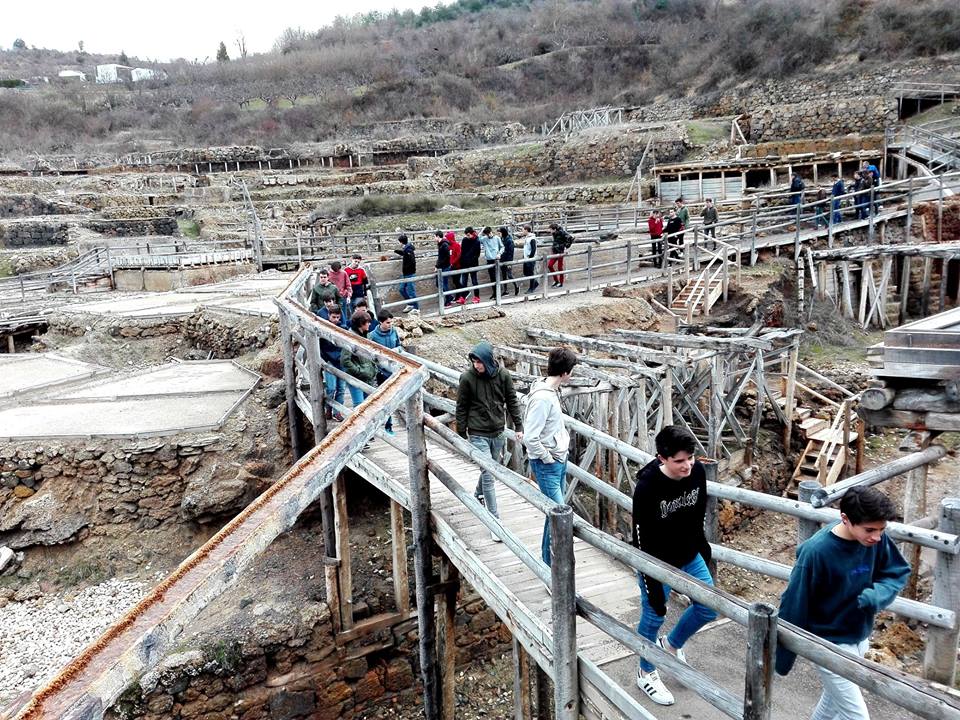
The saltwater is transported and distributed continuously and by using gravity through a complex network of canals called 'rollos'. Although originally many of them were simple trenches dug in the ground, they eventually were replaced by hollowed-out pine logs. The main distribution system, with more than three kilometres in total length - starts at the fountain of Santa Engracia in a single channel which is divided within a distribution tank called a 'Partidero': on the eastern slope of the valley, the Royo de Suso flows down and on the west slope the Quintana.
Deposits are also imperative for the salt farm. Currently, there are 848 wells for storage and way this water is distributed to the different threshing pits have always been an issue of dispute, as they are each privately owned and maintained by their respective owners. Thus there is a need for a complex distribution rulebook for the use of the brine, known as the Master Book. This ultimately keeps the peace between numerous owners.
The production of salt in Añana is based on the evaporation of water from the brine by natural means. To do so, saltwater is poured on horizontal surfaces called 'balsas' (rafts) or threshing pits whose surface varies between twelve and twenty square meters. The groups of threshing pits worked by the same owner are called farms. They are adapted to the complex topography of the site, both in form and height, resulting in complicated shapes that cover most of the Salt Valley territory. The point of maximum splendour was in the middle of the twentieth century when in the valley there were 5648 threshing pits in operation.
The buildings destined to store the salt in Añana can be divided into two types: private and public. The former was originally owned by salt workers. Such structures are mainly located under the threshing pits, taking advantage of existing holes between the walls of the terraces and the evaporation platforms. This building technique greatly facilitates the filling, because the salt is simply discharged by small holes in the surface of the threshing pits called 'bouquets' (sluices). The main function of these buildings is to hold the salt until transported to public warehouses located outside the valley. Añana had four of these buildings, which were built and controlled by the State during the monopoly of salt. They became known as El Grande, El Torco, Santa Ana and El Almacenillo del Campo. The whole production was kept there at the end of the season. In total, they could store about 110,113 “fanegas” of salt (approximately 5,681,830 kg). Now it is all in hands of the local community and although they could be extracting salt most of the year, they limit it to a few months a year when the temperatures are high enough to achieve fast evaporation, thus reducing the costs of labour per kg produced.
If you happen to be in the area it is certainly worth a visit, on-site there are tourist guides and trips around the valley and a museum with a shop where you can choose from a vast variety of different salts varying from “Flor de Sal” the most valuable; known as white gold and seasoned salts amongst others. This is one lucky village that has a permanent source of income no matter what the economic climate is, in fact, the only thing that would affect its production would be the lack of sunshine and in Spain that is not very likely.